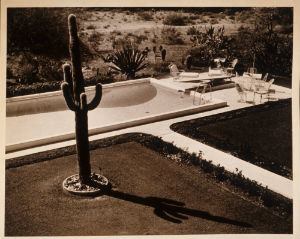Smithsonian Gardens, the horticultural arm of the Washington, D.C.-based institution, is offering an opportunity in several cities to explore the history of a true American original: the suburban backyard.
A traveling exhibition called “Pools, Patios and the Invention of the American Backyard” draws from the collections and research of the Smithsonian Gardens’ Archives of American Gardens and is organized for travel by the Smithsonian Institution Traveling Exhibition Service.
The program just capped off a successful run at Florida’s Tampa Bay History Center and will next take up residency at the Louisiana Old State Capitol in Baton Rouge, La. from Sept. 19 through Nov. 29, with more shows to follow.
Through photographs and plans from renowned landscape architects, along with vintage advertisements, the exhibit examines how the backyard became a staple of suburban life.
But this is more than a curious collection of artifacts. “Pools, Patios and the Invention of the American Backyard” illustrates how a confluence of cultural happenings after World War II shaped home life as we know it today.
“We’ve always had backyards, but the American backyard was a lot harder to define before the 1940s and ’50s,” said Kate Fox, exhibit curator.
Prior to this period, backyards were largely enjoyed by the super-rich, with formal gardens, croquet courts and waterfeatures enhancing the back of palatial estates.
But the baby boom, GI bill, affordable housing and mass movement away from city centers changed all that. The postwar economy was thriving, and more people had the means and space to create outdoor living areas. Manufacturers, freed up from supplying wartime materials, had a ripe new market to satisfy.
“Every company out there was using the backyard to sell their products,” Fox said. That included concrete and chlorine for swimming pools.
Aluminum was marketed especially aggressively as a backyard necessity, ideal for everything from patio furniture to foil to wrap up leftover barbecue. One manufacturer even commissioned legendary landscape architect Garrett Eckbo to design a backyard that utilized aluminum in canopies, trellises and structural fountains. It was a showpiece intended to inspire homeowners to rethink what was possible with the metal, but the result was a weird mix of science fiction and outdoor living.
“It obviously didn’t catch on,” Fox said.
This is all reflected in a series of advertisements culled from magazines such as Popular Mechanics.
Visitors also will learn about Thomas Church, the design icon who literally changed the shape of the pool industry by inventing the freeform pool. What’s said to be the very first iteration of that 1950s icon — the kidney-shaped pool — was installed in the Donnell Garden in Sonoma, Calif., in 1948. That particular installation also boasts another feature that sets it apart — it’s a biomorphic structure that appears to float on the surface like an iceberg. Today the property is preserved and celebrated for its historical significance.
The 20-venue tour will continue through the first half of 2020. Next year it will stop in Chicago suburbs Elmhurst and Glen Ellyn, Ill., with more destinations to be announced. Visit www.gardens.si.edu for details.



